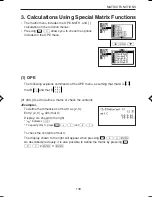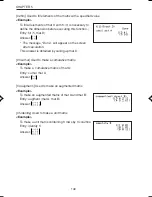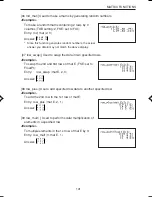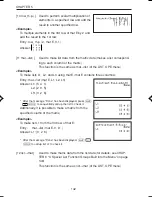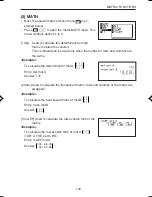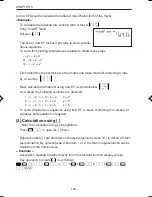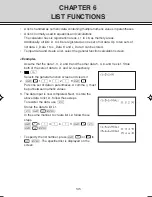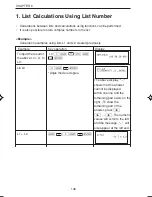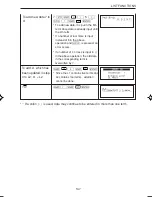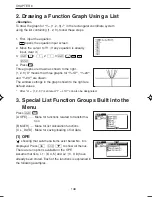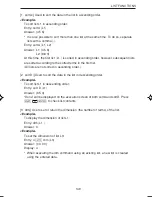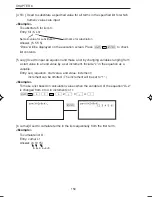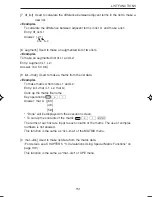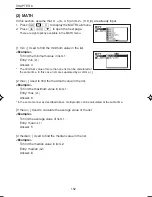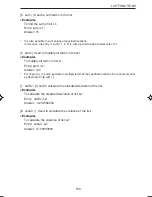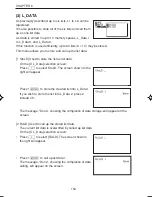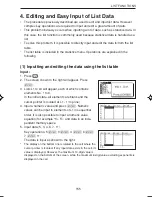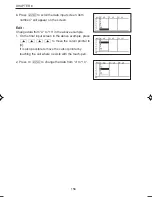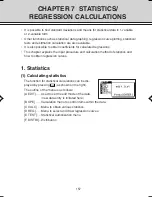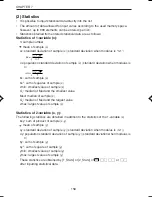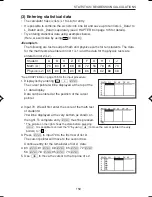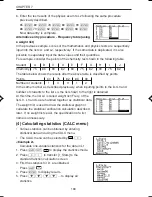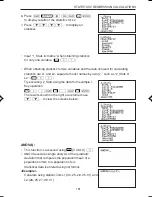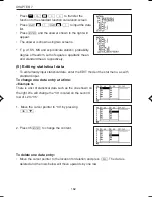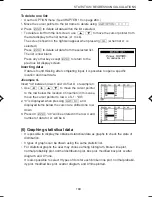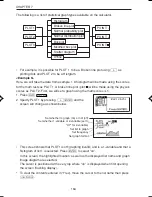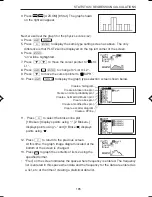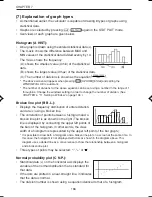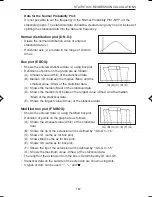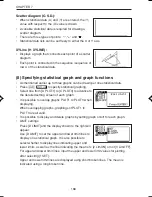
LIST FUNCTIONS
153
[5 sum ( ] Used to sum terms in the list.
<Example>
To find the sum of list L1:
Entry: sum (L1 )
Answer: 15
*
It is also possible to sum values at specified locations.
In this case, the entry is sum (L1, 2, 5) to sum up 2nd trough 5th elements of L1.
[6 prod(] Used to multiply all terms in the list.
<Example>
To multiply all terms in list L1:
Entry: prod (L1)
Answer: 120
*
For [6 prod ( ], it is also possible to multiply terms at the specified locations in the same manner
as described in [5 sum ( ].
[7 stdDv ( ] Used to calculate the standard deviation of the list.
<Example>
To calculate the standard deviation of list L2:
Entry: stdDv (L2)
Answer: 3.214550254
[8 varian ( ] Used to calculate the variance of the list.
<Example>
To calculate the variance of list L2:
Entry: varian (L2)
Answer: 10.33333333
EL-9650-(06)EN (145-156)
8/1/00, 9:03 AM
153
Summary of Contents for EL-9650
Page 10: ...viii ...
Page 46: ...36 CHAPTER 1 ...
Page 230: ...220 CHAPTER 9 ...
Page 268: ...258 CHAPTER 12 ...
Page 349: ...339 APPENDIX When coordinate system is Rect param or polar ...
Page 350: ...340 APPENDIX When coordinate system is Seq F STYLE2 E STYLE1 ...
Page 352: ...342 APPENDIX ...
Page 353: ...343 APPENDIX on Program screen ...
Page 354: ...344 APPENDIX ...
Page 355: ...345 APPENDIX ...
Page 356: ...346 APPENDIX ...
Page 357: ...347 APPENDIX ...
Page 358: ...348 APPENDIX ...

